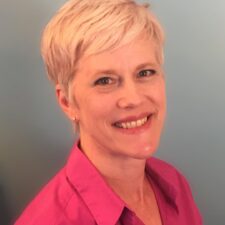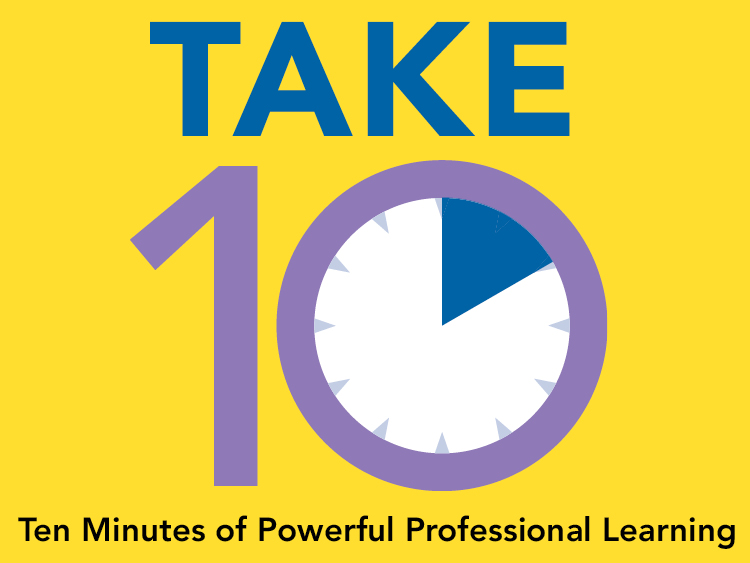As educators, we believe in the kids in our classrooms. We push them. We cheer them on. We know they can do it and we do our best to convince them to share that belief. We may even talk to them about the importance of a growth mindset – the idea that intelligence is malleable, not innate, and that everyone can get better at academic subjects or hobbies or relationships or really anything with time and practice. But how much do we ourselves model a growth mindset in front of students? The good news is that the NGSS are tailor made to allow us to do just that. The better news is that modeling a growth mindset can help make the challenges of remote learning and the stress of the pandemic more manageable.
A growth mindset addresses what we know about intelligence. People who are said to have a growth mindset believe they can learn and approach difficulty as a welcome challenge. Those with a fixed mindset believe they either have “it” (whatever the “it” is) or they don’t and there is little they can do to change. If you’re not completely sure about the nuances of a growth mindset, Carol Dweck, Stanford psychology professor and researcher and pioneer of the term, understands your challenge. One misunderstanding she has found is the idea that people have only one mindset for all scenarios when the reality is that people feel able to practice and improve in certain areas but feel threatened and insecure in other areas or at other times. Another is that fostering a growth mindset is as simple as praising effort, regardless of outcome. Students are savvy enough to know that your praise of their effort on an assignment with a poor grade is hollow unless it is paired with other interventions.
Some interventions for promoting a growth mindset include educating students on how intelligence works and guiding them in how to approach challenges explicitly. But if we aren’t already doing this in our classrooms, is it really that critical right now given, you know, everything?! We believe the answer is yes and here’s why – if students do not believe in themselves, what motivates them to practice when they are spending increasingly long hours isolated at home? What confidence do students have to practice when there is not even the presence of a trusted adult in the room? Fortunately, organizations are putting up resources to help us with this work. Check out this blog or this one for lots of ideas and resources to try for promoting a growth mindset.
One strategy we want to highlight from many of these sources is the idea of modeling a growth mindset for your students. Watch this video about one teacher’s approach with an activity she calls her Favorite No. She collects responses to a warm up and sorts them into two piles – yes, the student got it or no, the student didn’t. Then, she picks her favorite no. Not the worst of the bunch. Not the one that is just a tiny baby step away from yes. She picks one that has teachable moments in it. In her process, she stresses all that the student did well then asks the class to describe what was done incorrectly and how to fix it. This process does a lot – it lets students see they are not alone in making mistakes; it celebrates all that they have accomplished already; it gives everyone – including the student with the favorite no – a do over; it promotes collaboration; it gets kids thinking and talking about how to approach problems; and perhaps most importantly – it publicly demonstrates growth, in real time. Powerful stuff!
Another way to model a growth mindset is to point the spotlight on ourselves as we muddle through something we do not yet understand fully such as a phenomenon in the natural world. We have already published several blogs about using phenomena to drive learning. Planning to use student questions to guide instruction can be really intimidating because it introduces the possibility that kids ask questions that we cannot answer. That’s OK! Good phenomena and engineering problems are intriguing, complex, puzzling, and provide a rich environment for us to think out loud in front of students and share our own partial understandings. What is great about the shift to NGSS is that learning science is so much more authentic, including the missteps that happen along the way. When we as educators think out loud, we model uncertainty, interest in figuring out more, trying multiple approaches, and perseverance. Let’s embrace being able to say to students, “I don’t know that yet but we can figure out more about it together.”
Even if we have been doing a lot to foster growth mindsets in our students all along, stress can derail even the most confident learners. As we mentioned already, children likely have a growth mindset in certain areas or at certain times and not in others. As students and their educators navigate a shifting world, children may lose their growth mindset without reinforcement. Even adults abandon what they perceive as uncertain and threatening in times of stress, retreating and shrinking their thinking back to something that feels safe to them. This study from the Harvard Business Review puts an actual dollar amount on the dangers of adults not collaborating to support sharing and innovation, all of which rests on believing that adaptation and growth is possible – even for adults. Our students need a growth mindset now more than ever. They need it to get the most out of their at home learning. They need it to have the resilience to manage stress they never had before. They need it for adulthood. And we can model it. All it takes from us is the courage to share our own journeys.
This content was made possible in part by the Institute of Museum and Library Services.
Thank you for taking the time to read this blog post! The team at the Mandell Academy is here to support your needs, and are always happy to share what we find with you. For more resources, join our Educator Hub on Facebook and search our Professional Learning opportunities on our website.

Gail Mitchell Emilsson is a Professional Learning Specialist at the Connecticut Science Center’s Mandell Academy for Teachers. Previously, she worked in pharmaceutical research and as a high school science teacher in high need schools. Gail’s professional interests include supporting educators in creating meaningful and equitable science learning experiences. Gail joins the rest of the Mandell team in designing and providing immersive professional learning and coaching in districts.


